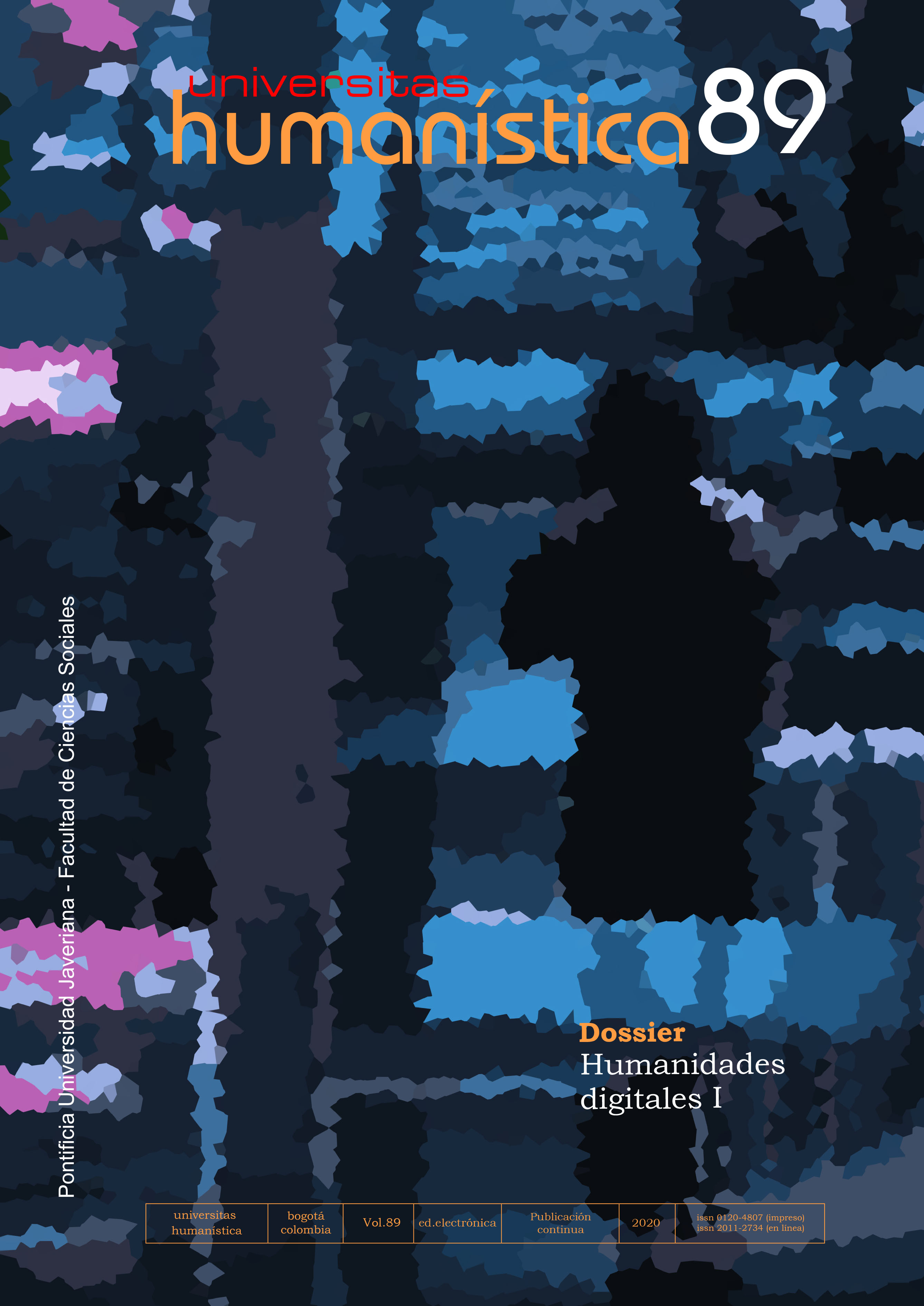Resumo
Este documento apresenta, de um ponto de vista introdutório e dirigido a não especialistas em teoria de redes, os fundamentos de grafos e redes que permitem projetar informações sobre redes culturais em um contexto formal. Ele também descreve algumas das medidas e ferramentas mais comuns para desenhar mecanismos quantitativos para a análise subsequente dessas redes. Este artigo não tem a pretensão de ser um curso ou um tutorial completo de teoria das redes, para isso o leitor pode recorrer a qualquer uma das referências apontadas ao final, mas constitui uma introdução orientada a percorrer, em um único documento, alguns dos detalhes considerados mais importantes e que muitas vezes ficam de fora das explicações iniciais sobre o assunto.
Abedijaberi, A. (2018). Mining and analysis of real-world graphs. Missouri University of Science and Technology.
Almagro, P., Dávila, E., Guerrero, G., Medina, I., Regalado, E., Ruíz, Z., Salvador, J. y Sancho, F. (2015). Nuevas líneas metodológicas aplicadas al patrimonio cultural ecuatoriano, Revista del Patrimonio Cultural del Ecuador, 6, 68-75. https://site.inpc.gob.ec/pdfs/Publicaciones/Revista-INPC-%236-version10-LowRes.pdf
Barabási, A. L. (2002). Linked: The new science of networks.Plume.
Berry, D. M. (2012). Understanding digital humanities. Palgrave MacMillan.
Bondy, J. & Murty, U. (2008). Graph Theory. Springer-Verlag.
Brandes U. & Erlebach T. (eds.) (2005). Network analysis: Methodological foundations. Volume 3418 of Lecture Notes on Computer Science. Springer-Verlag.
Buchanan, M. (2002). Nexus: Small worlds and the groundbreaking science of networks. Norton.
Chartrand, G. (2012). Introductory graph theory. Dover books on mathematics. Courier Corporation.
De la Rosa Pérez, J., Suárez, J. L. & Sancho, F. (2013). SylvaDB: A polyglot and multi-backend graph database and management system. Proceedings of the 2nd International
Conference on Data Technologies and Applications, 285–292. https://doi.org/10.5220/0004475702850292
Diestel, R. (2005). Graph Theory. Springer-Verlag.
Dorogovtsev, S. & Mendes, J. (2003). Evolution of networks: From biological nets to the internet and www. Oxford University Press.
Estrada, E. (2011). The structure of complex networks. Theory and applications. Oxford University Press.
Grandjean, M. (2016). A social network analysis of Twitter: Mapping the digital humanities community. Cogent Arts & Humanities, 3(1). https://www.tandfonline.com/doi/full/10.1080/23311983.2016.1171458
Hanneman, R. & Riddle, M. (2005). Introduction to social network methods. Lecture notes. University of California.
Javed, M.A., Younis, M. S., Latif, S., Qadir, J. & Baig, A. (2018). Community detection in networks: A multidisciplinary review. Elsevier Science.
Langville, A. N. & Meyer, C. D. (2011). Google's pagerank and beyond: The science of search engine rankings. Princeton University Press.
Lewis T. G. (2009). Network science: Theory and practice. John Wiley.
Medina, M. A. (2014). Network theory and its applications in arts practice and history of arts. RupkathaJ Interdiscip Stud Humanit, 6(3). https://rupkatha.com/V6/n3/02_Network_theory.pdf
Moretti, F. (2011). Network theory, Plot analysis. A Stanford Lit Lab Pamphlet.
Natarajan, M. (2018). Centrality metrics for complex network analysis. Emerging Research and Opportunities. Advances in Wireless Technologies and Telecommunication. IGI Global.
Painter, D. T., Daniels, B. C. & Jost, J. (2019). Network analysis for the digital humanities: principles, problems, extensions. Isis, 110(3), 538-554. https://www.journals.uchicago.edu/doi/full/10.1086/705532
Peña, M., Suárez, J. L. & Sancho, F. (2009). Topic maps for philological analysis. Linked topic maps. Fifth International Conference on Topic Maps Research and Applications Conference, TMRA, Leipzig, Germany. http://tmra.de/2009/documents/TMRA2009_Proceedings.pdf
Rodriguez, M. & Neubauer, P. (2011). A path algebra for multi-relational graphs. 2nd International Workshop on Graph Data Management (GDM'11), IEEE, Hannover, Alemania. https://arxiv.org/abs/1011.0390
Suárez, J. L. & Sancho, F. (2013). Evolving creativity: An analysis of the creative method in elbulli restaurant. International Conference on Culture and Computing, 2013. 10.1109/CultureComputing.2013.25.
Suárez, J. L., Sancho, F., Ortega, E., De la Rosa, J., Caldas, N. & Brown, D. (2013). Literary and Linguistic Computing, 28(4), 718–735. https://doi.org/10.1093/llc/fqt050
Vanrell Vellosillo, A., Sancho Caparrini, F., Suárez, J. L. y Sánchez Ortiz, A. (2016). Propuestas para el análisis de colecciones de arte a través de metodologías y herramientas computacionales. Anuario TAREA, 2(2), 136-153. https://idus.us.es/handle/11441/107076
Youngman, P. A. & Hadzikadic, M. (2014). Complexity and the human experience: Modeling complexity in the humanities and social sciences. CR Press.
Wasserman, S. & Stanley, K. F. (1994). Social network analysis: Methods and applications. Cambridge University Press.

Este trabalho está licenciado sob uma licença Creative Commons Attribution 4.0 International License.
Copyright (c) 2021 Fernando Sancho Caparrini


